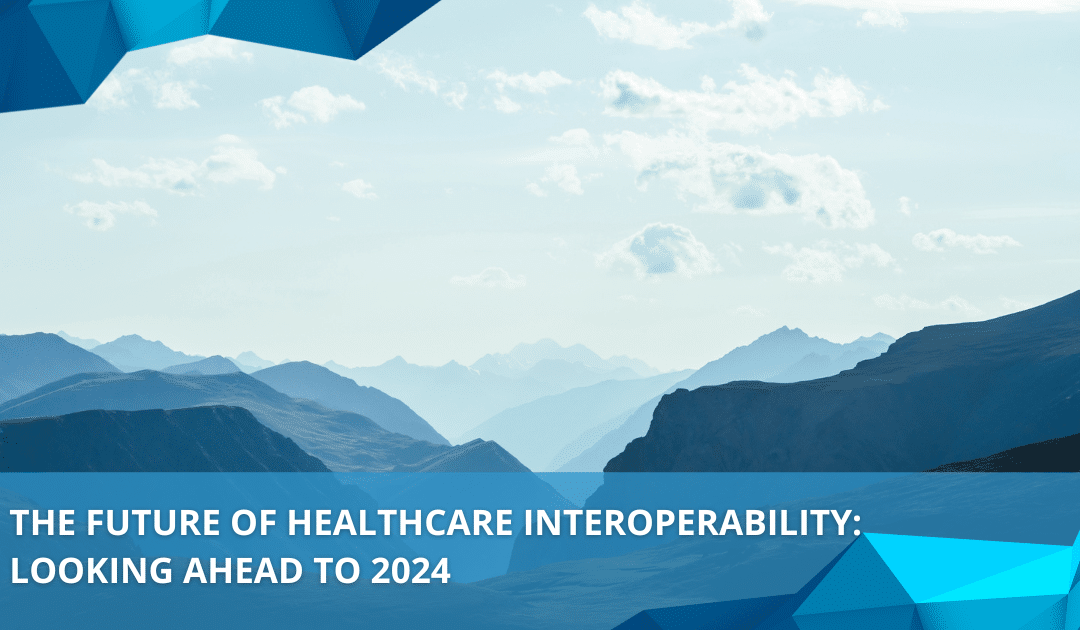As 2023 comes to a close, we reflect on a year of exciting breakthroughs in accelerating healthcare data exchange.
The recent announcement from the Office of the National Coordinator for Health Information Technology (ONC) has officially marked the beginning of a new era with the implementation of TEFCA, and the first designated Qualified Health Information Networks (QHINs).
Looking ahead towards 2024, Zen Healthcare IT President & Cofounder, Marilee Benson, provides a spotlight on the recent ONC announcement, the initial five QHINs, what she is excited about, and what trends she expects to see moving into the new year

- 🥂 The designated QHIN’s are live – Go TEFCA!
- Congratulations to eHealth Exchange, Epic Nexus, Health Gorilla, KONZA National Network, and MedAllies for being officially designated as QHINs under TEFCA, and also exchanging data in production!
- However, let’s take “in production” with a grain of salt. There has been little published about the details of the current “QHIN to QHIN” exchange. My bet is that there is still a LOT of work to do to support high volume QHIN exchange for multiple use cases.
- More QHIN’s coming in 2024?
- Commonwell Alliance, Kno2, Surescripts, eCW (and other EHR tethered QHINs?) are still in the testing phases, with a total of 15 others potentially in the mix for next year. As we’ve mentioned previously, I expect to see more EHR-tethered candidate QHINs moving forward – with eCW being a very recent announcement.
- HHS and ONC approve the final HTI-1 rule
- There are many important aspects of this final rule, but the one that is on the top of my radar is related to the Enhanced Information Blocking Requirements: “Revises certain information blocking definitions and exceptions to support information sharing, and adds a new exception to encourage secure, efficient, standards-based exchange of electronic health information under the Trusted Exchange Framework and Common Agreement (TEFCA).” My take – I think it’s likely that many health organizations will more strongly consider QHIN participation due to this language, even if it’s been watered down a bit. These clarifications are important.
- A somewhat controversial proposed data blocking “manner exception” related to TEFCA participation has been modified slightly to be more specific in its final form:
- The TEFCA manner exception applies only if both the actor and requestor are part of TEFCA, and
- the requestor must be able to access, exchange, or use the requested EHI via TEFCA.
- The TEFCA manner exception is not available when the requestor has requested access, exchange, or use via FHIR-based APIs.
- A somewhat controversial proposed data blocking “manner exception” related to TEFCA participation has been modified slightly to be more specific in its final form:
- There are many more important details in the HTI-1 Final Rule – Happy New Year reading through that 916-page document!
- There are many important aspects of this final rule, but the one that is on the top of my radar is related to the Enhanced Information Blocking Requirements: “Revises certain information blocking definitions and exceptions to support information sharing, and adds a new exception to encourage secure, efficient, standards-based exchange of electronic health information under the Trusted Exchange Framework and Common Agreement (TEFCA).” My take – I think it’s likely that many health organizations will more strongly consider QHIN participation due to this language, even if it’s been watered down a bit. These clarifications are important.
- New eHealth Exchange Incentive program announced
- eHealth Exchange is offering a significant financial incentive to the first few payers and HIEs or Provider organizations to participate in the FHIR based pilot based on the HL7® Da Vinci Project Implementation Guides. Please reach out to Zen immediately if you are interested in taking advantage of this fantastic opportunity to save significantly on your annual eHEX fees.
- Electronic Preauthorizations – the smoothest path for nationwide payer/provider data exchange? This was a hot topic at the November San Diego Annual National Network meetings. This is a “win-win” use case for both payers and providers, which will help accelerate adoption. Expect to see some early pilot activity in 2024 in this area.
- 2024 is the year that FHIR will become the “starting place” for new nationwide data exchange use cases.
- Especially for exchanging data with payers because they don’t have a lot of legacy IHE connections that exist for provider to provider exchange for Treatment. Thus FHIR becomes the path of least resistance for non-treatment use cases under the National Networks. We can already see this in emerging new Implementation Guides. The fact that the ONC is making this a priority for 2024 will also help “light a FHIR”. Forgive me – had to do it. 🙂
- Zen’s advice is to expect a blended technical landscape with both IHE and FHIR based exchange
- If you want to fully leverage all use cases available under TEFCA (which will then roll right down to the other national networks (Commonwell Alliance, eHealth Exchange, and Carequality), you’ll need to be able to do both IHE and FHIR based queries.
- That adds a lot of complexity to exchanging data across the networks. That fits perfectly with Zen’s national network exchange solutions – how about yours?
What are you excited about for 2024?
What are your major interoperability priorities? What risks do you see in achieving your own interoperability goals, or issues you see that might derail the adoption of TEFCA? We value your insights and would love to hear your thoughts.







